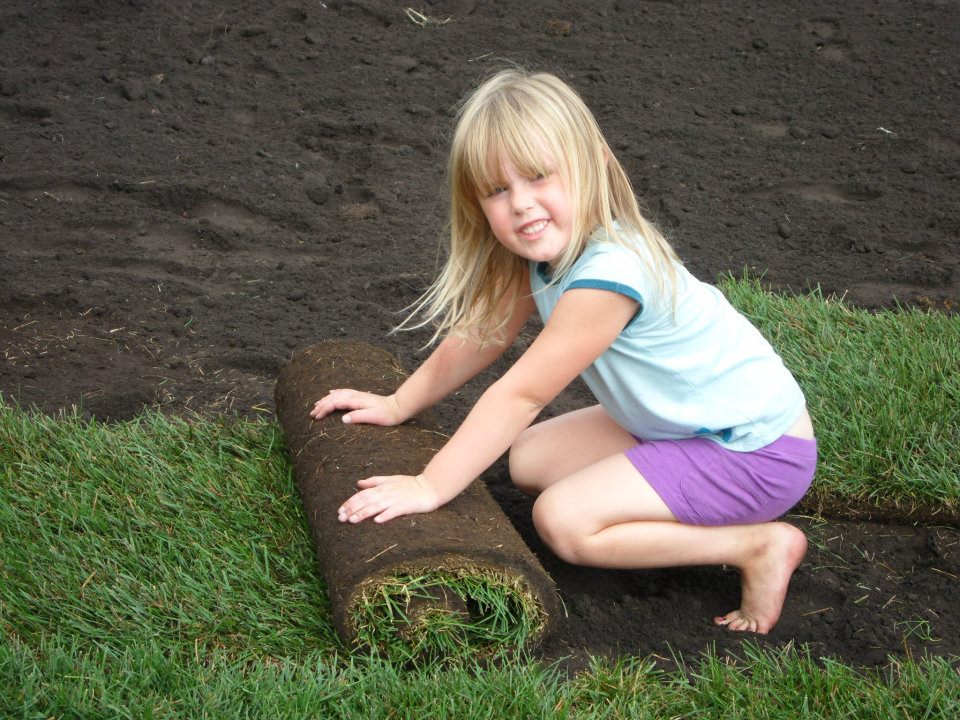Following these steps will make sure that your new sod will root properly into the topsoil.
It is recommended that you first apply a starter fertilizer on top of the topsoil before the sod is installed. This will promote faster root growth into the topsoil to help establish your new lawn. Gusta Sod Farms recommends a 18-24-12 fertilizer blend.
Begin installing sod along the longest straight line, such as a driveway or sidewalk. Butt and push edges and ends against each other tightly, without stretching. Avoid gaps or overlaps. Stagger the joints in each row in a brick-like fashion, using a large sharp knife to trim corners, etc. Avoid leaving small strips at outer edges, as they will not retain moisture. On slopes, place the sod pieces across the slope.
To avoid causing indentations or air pockets avoid repeated walking or kneeling on the sod while it is being installed or just after watering.
After installing the sod, roll over the entire area to improve sod/soil contact and remove air pockets.


Sod is extremely perishable. Install immediately, protect your investment.
Watering Your Sodded Lawn
Water your new lawn immediately after installation. Turf is a living plant that requires ground contact and moisture to survive. The first watering is the most important. The water must go through the sod and make the topsoil very wet. For the next 2 weeks water daily keeping sod/soil moist until it is firmly rooted.
Give your new lawn at least 2 to 3 cm. (1 in.) of water immediately after installation. Water daily, or more often, keeping sod moist until it is firmly rooted (about 2 weeks). Then less frequent and deeper watering should begin.
Weather conditions will dictate the amount and frequency of watering. Be certain that your new lawn has enough moisture to survive hot, dry, or windy periods. Water areas near buildings more often where reflected heat dries sod.
Water as early in the morning as possible to take advantage of the daily start of the grass’ normal growing cycle, usually lower wind speeds and considerably less loss of water because of high temperature evaporation.
Watering Tip: Make absolutely certain that water is getting to all areas of your new lawn, regardless of the type of sprinkling system you use. Corners and edges are easily missed by many sprinklers and are particularly vulnerable to drying out faster than the center portion of your new lawn.
During the remainder of the growing season, most lawns will do very well with a maximum total of 2 to 3 cm (1 in.) of water a week, coming either from rain or applied water. Soil conditions may dictate the amount of water to be applied in two applications, approximately two to three days apart. This amount of water, properly applied, is all that is required for the health of the grass, providing it is applied evenly and saturates the underlying soil depth of 10 to 15 cm. (4 to 6 in.)
Caution!
During the first three weeks, avoid heavy or concentrated use of your new lawn. This gives the roots an opportunity to firmly knit with the soil, and ensures that the turf will remain smooth.
